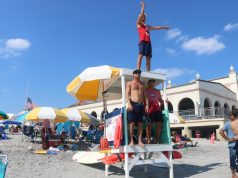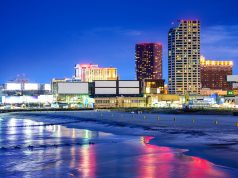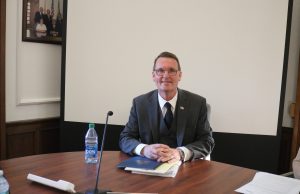A science experiment designed by Ocean City High School students will fly to the International Space Station this fall to be tested in the absence of gravity.
Lauren Bowersock, Mercy Griffith, Kristine Redmond, Daniel Loggi, Kaitland Wriggins and Alison Miles developed the experiment, which was chosen from among several others to be sent into space.
The winning proposal will analyze the effect of microgravity on the attachment rate of E. coli bacteria to lettuce cells — information that would be practical if people ever tried to cultivate food during long periods of travel in space, according to Bowersock.
The brainy exercise is part of the Student Spaceflight Experiment Program, a national program designed to inspire a new generation of scientists and engineers in the U.S.
Ocean City’s emphasis on science, technology, engineering and mathematics (STEM) education helped the district win selection as one of only 19 schools nationwide to participate in the program’s sixth mission into space.
Each of the 19 schools organized competitions to choose one experiment to be tested by astronauts aboard the International Space Station in the fall.
Working after school, about 75 students — five teams from Ocean City High School, five from Upper Township Middle School and one from Ocean City Primary School — formed hypotheses, developed procedures to test the hypotheses under restrictions necessary to be conducted on the International Space Station., then wrote research proposals explaining their hypotheses and how they intended to test them.
The top three were selected by a panel of judges and submitted for review at the national level.
The entire experiment needs to fit into a seven-inch cylinder about an inch in diameter. Complicating development of the experiment, the students needed to account for travel time before launch. The winning team, for instance, had to find a way to inhibit growth of the E. coli for a few weeks after it is sealed into its container but before it reached space.
The same students will analyze data when the experiment returns to Earth.
STEM Curriculum Director Mikenzie Helphenstine and high school science teacher Dan Weaver helped bring the program to Ocean Ctiy, and teachers Dave Uhrich and Catherine Georges helped at the high school level.
The community and other students can get involved by helping to design a 4-by-4-inch mission patch to fly with the experiment. Ocean City Primary and Intermediate School art students designed patches illustrating science in space. Two of these patches will also travel into space with the selected experiment.
The Ocean City PTA donated all proceeds from their Spring Carnival to the cost of launching the experiment. Many private donations also helped fund the program.





